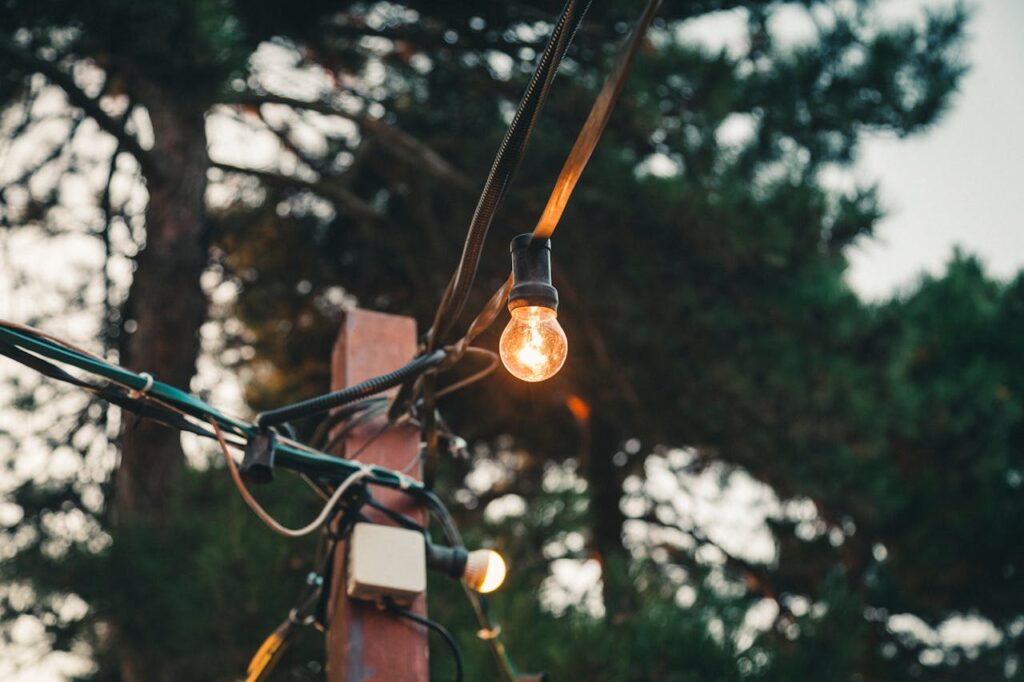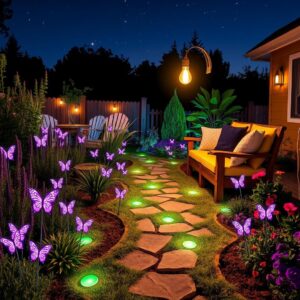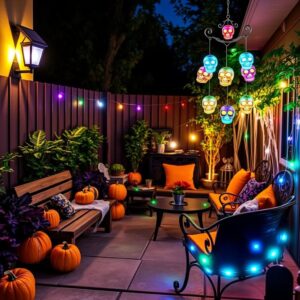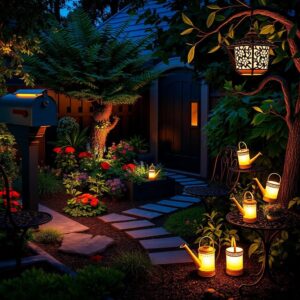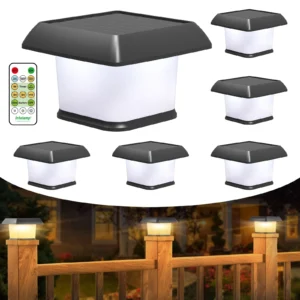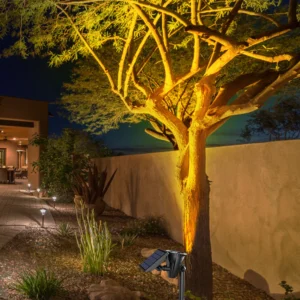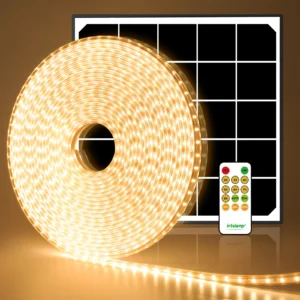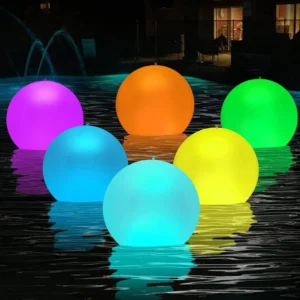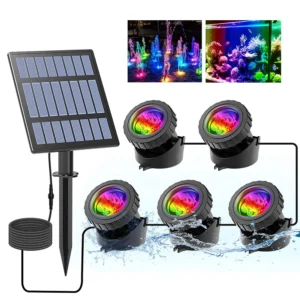Festoon lights are a beautiful and versatile lighting option that can add warmth and charm to any outdoor or indoor setting. Whether you’re illuminating a patio, garden, or event space, festoon lights help create a cozy and inviting atmosphere. Here’s a closer look at festoon lights, their history, and seven creative uses for these decorative string lights.
What is a Festoon Light?
Festoon lights are decorative string lights typically composed of a series of bulbs attached to a flexible cord. These lights are designed to be hung in various configurations, creating a warm, inviting glow that enhances any setting. They are commonly used for outdoor events, parties, and as permanent fixtures in gardens and patios, but they can also be incorporated into indoor decor to add a cozy ambiance.
Different Power Sources
Festoon lights come with versatile power options, making them suitable for a range of environments:
Electricity: Traditional festoon lights are often powered by standard electrical outlets, providing consistent illumination. This option is ideal for long-term installations, such as in permanent outdoor setups or indoor spaces.
Solar: Solar festoon lights utilize solar panels to convert sunlight into energy. During the day, the solar panel charges the built-in batteries, allowing the lights to operate at night without needing an electrical connection. This eco-friendly option is perfect for outdoor areas where running wires may be impractical.
Batteries: Some festoon lights are battery-operated, providing flexibility for temporary installations. These lights are often used for events where electricity is not readily available. While they are convenient, battery-operated options may require regular battery replacement, especially if used frequently.
Styles Available
Festoon lights are available in a variety of styles, allowing you to choose the perfect look for your space:
Incandescent: Traditional incandescent festoon lights offer a warm, vintage glow. They are often favored for their nostalgic aesthetic but may be less energy-efficient compared to modern alternatives.
LED: LED festoon lights are increasingly popular due to their energy efficiency and longevity. They produce less heat, consume less power, and can last significantly longer than incandescent bulbs. LED options come in various colors and designs, making them versatile for any occasion.
Vintage: Vintage-style festoon lights mimic the look of classic bulbs, often featuring filament designs that evoke a sense of nostalgia. These lights can add a charming touch to both indoor and outdoor settings, enhancing the overall decor while maintaining modern energy efficiency.
History of Festoon Lights
The history of festoon lights reflects the broader evolution of lighting technology, showcasing how these decorative lights have adapted over time to meet changing aesthetic preferences and practical needs.
Evolution from Gas-Powered to Electric Lighting
Festoon lights can trace their origins back to the early 19th century when they were primarily powered by gas. These early versions featured strings of small gas lamps suspended from wires, illuminating outdoor spaces like gardens, streets, and public parks. The warm glow of gas lights created an inviting atmosphere for nighttime gatherings, making them popular for celebrations and social events.
As the 19th century progressed, the advent of electricity transformed the lighting landscape. With the widespread availability of electrical infrastructure, festoon lights began to transition from gas to electric power. Electric festoon lights offered several advantages over their gas-powered predecessors, including:
- Brighter Illumination: Electric lights provided a more reliable and brighter source of light, enhancing visibility for gatherings and events.
- Diverse Designs: The flexibility of electric wiring allowed for more intricate and creative designs, including various bulb shapes, colors, and arrangements that were not possible with gas lights.
- Safety and Convenience: Electric lights eliminated the fire hazards associated with gas lamps, providing a safer option for both public and private spaces.
By the late 19th and early 20th centuries, electric festoon lights became a staple in outdoor settings, marking a significant shift in how people illuminated their environments.
Continued Popularity in Outdoor and Event Settings
Today, festoon lights remain incredibly popular for both outdoor and indoor use, with their charm and versatility appealing to a wide range of audiences. Their continued popularity can be attributed to several factors:
Outdoor Entertaining: Festoon lights are a favorite choice for outdoor entertaining, providing a cozy and festive atmosphere for gatherings, barbecues, and parties. They are often used to illuminate patios, decks, and gardens, making outdoor spaces more inviting and enjoyable after sunset.
Special Events: These lights are commonly used in weddings, festivals, and other special events. Their warm, twinkling glow adds a romantic touch to any setting, making them a go-to choice for event planners looking to create a memorable ambiance.
Aesthetic Appeal: With a wide variety of styles available, including vintage, modern, and LED options, festoon lights can complement any decor theme. Their ability to enhance the visual appeal of a space while providing functional lighting makes them a favored choice for homeowners and businesses alike.
Adaptability: The rise of solar-powered festoon lights has further increased their popularity. These eco-friendly options allow for installation in areas without access to electrical outlets, making them ideal for gardens, patios, and outdoor events.
What are Festoon Lights Used For?
Festoon lights are celebrated for their versatility and ability to enhance various environments. Here’s how they are commonly used across different settings:
#1 Outdoor Entertaining: Creating Ambiance for Gatherings
Festoon lights are perfect for outdoor entertaining, transforming patios and backyards into inviting spaces for gatherings. Their soft glow helps set a relaxed atmosphere, making them ideal for parties, barbecues, and casual get-togethers. By strategically hanging them above dining areas or around seating arrangements, hosts can create a cozy ambiance that encourages guests to linger and enjoy the evening. Their aesthetic appeal also allows for creative arrangements, such as draping them across trees or along fences, further enhancing the outdoor experience.
#2 Garden Lighting: Highlighting Landscaping Features
In gardens, festoon lights serve not only as a source of illumination but also as a decorative element that highlights landscaping features. When placed along pathways, around flower beds, or among trees, these lights can accentuate the beauty of the garden, providing a stunning visual effect after dark. They create a magical atmosphere, making the garden a delightful place for evening strolls or relaxation. Additionally, festoon lights can help define outdoor spaces, guiding visitors through different sections of the garden while enhancing its overall charm.
#3 Wedding Décor: Enhancing Romantic Settings
Festoon lights have become a popular choice for wedding decor, adding a romantic and enchanting touch to ceremonies and receptions. Their warm light creates an intimate atmosphere that is ideal for celebrating love. Couples often use festoon lights to illuminate key areas, such as the altar, reception tent, or dance floor. They can be hung in creative patterns, draped over tables, or strung along walkways, guiding guests to important locations while enhancing the overall aesthetic. This versatile lighting option can complement various wedding themes, from rustic to elegant.
#4 Indoor Décor: Adding Warmth to Interior Spaces
Inside homes, festoon lights bring a cozy and inviting feel to various rooms. Whether used in living rooms, bedrooms, or dining areas, these lights can create a warm ambiance that promotes relaxation and comfort. They can be hung above seating areas, along walls, or draped across mantels to enhance the decor. In children’s rooms, festoon lights can add a whimsical touch, making the space feel magical. Additionally, they can be integrated into holiday decorations, providing festive lighting during special occasions.
#5 Retail/Commercial Use: Attracting Customers and Enhancing Displays
In retail and commercial settings, festoon lights can significantly impact the shopping experience. They help attract customers by creating an inviting storefront that stands out, especially during the evening hours. Retailers often use festoon lights to highlight specific areas or products, drawing attention to displays or creating a welcoming atmosphere for shoppers. Restaurants and cafes also benefit from festoon lighting, as it enhances outdoor dining areas and encourages patrons to enjoy their meals in a pleasant, illuminated setting.
#6 Special Events: Elevating the Atmosphere for Corporate Functions
For corporate functions, fundraisers, and gala events, festoon lights can elevate the overall atmosphere and contribute to a memorable experience. These lights can be used to create striking backdrops, illuminate dining areas, or highlight specific zones within the venue. By offering both functionality and style, festoon lights help transform ordinary spaces into extraordinary environments, ensuring guests feel welcomed and engaged. Their versatility allows for different configurations, accommodating the unique needs of each event.
#7 Ceiling Installation: Alternatives to Traditional Ceiling Lights
Festoon lights also serve as an appealing alternative to traditional ceiling lighting, especially in outdoor areas such as porches, patios, and decks. They can be hung from eaves, pergolas, or trees, creating an enchanting atmosphere while providing essential illumination. This installation style not only adds aesthetic value but also frees up floor space and enhances the overall design of the area. Festoon lights can be used in both residential and commercial spaces, offering an eye-catching and functional solution to traditional lighting challenges.
In summary, festoon lights are incredibly versatile and can be adapted for a wide range of uses, enhancing both indoor and outdoor environments with their warm glow and decorative appeal.
Solar Festoon Lights
Solar festoon lights are an innovative lighting solution that harnesses solar energy to power their illumination. They consist of a string of decorative lights, typically LED bulbs, connected to a small solar panel that collects sunlight during the day. This renewable energy source not only powers the lights but also brings a host of benefits that make solar festoon lights an attractive option for various applications.
Explanation of Solar Festoon Lights
Solar festoon lights operate using solar panels that convert sunlight into electricity. During the day, the solar panel absorbs sunlight and stores energy in built-in batteries. Once night falls, the stored energy powers the LED bulbs, providing beautiful illumination without the need for traditional electrical outlets or wiring. This makes them ideal for outdoor settings, where access to power sources may be limited.
Benefits of Solar Festoon Lights
Easy Installation: Solar festoon lights are incredibly easy to install. Without the need for electrical wiring or outlets, they can be set up quickly in various locations, including gardens, patios, and outdoor events. Users simply hang the lights in the desired configuration and place the solar panel where it can receive maximum sunlight. This hassle-free installation process saves time and effort, making it accessible even for those with minimal DIY skills.
Cost-Efficiency: One of the most appealing aspects of solar festoon lights is their cost-efficiency. Since they operate on solar power, users do not incur ongoing electricity costs. This can lead to significant savings over time, especially when used for long periods or in larger installations. Additionally, the initial investment in solar festoon lights is often balanced out by the absence of wiring expenses and reduced energy bills. Many models also come with durable components that minimize the need for replacements, further enhancing their cost-effectiveness.
Eco-Friendliness: Solar festoon lights are an environmentally friendly lighting option. By using solar energy, they reduce reliance on fossil fuels and lower carbon emissions associated with conventional electricity production. This makes them a sustainable choice for eco-conscious consumers looking to minimize their environmental impact. Additionally, many solar festoon lights use LED bulbs, which are energy-efficient and have a longer lifespan than traditional incandescent bulbs, further contributing to sustainability efforts.
Versatile Applications: Solar festoon lights can be used in a variety of settings, from residential gardens to commercial outdoor spaces. Their versatility allows users to enhance the ambiance of any area, making them perfect for outdoor entertaining, weddings, or special events. With different styles and designs available, solar festoon lights can complement various decor themes, whether rustic, modern, or vintage.
Low Maintenance: Solar festoon lights require minimal maintenance compared to traditional lighting systems. Users typically need to ensure that the solar panel remains clean and free of obstructions to maximize sunlight absorption. With no wiring or electrical components to worry about, there is less risk of malfunction, and many models are designed to withstand outdoor conditions, reducing the need for frequent replacements or repairs.
How Long do Solar Festoon Lights Last?
The lifespan of solar festoon lights can vary significantly based on several factors, including the quality of the materials, the type of bulbs used, and the environmental conditions they are exposed to. Understanding these considerations can help users make informed decisions about their purchase and maintenance.
Lifespan Considerations
Quality of Components: The durability and longevity of solar festoon lights largely depend on the quality of their components. Higher-quality models typically feature robust materials, such as weather-resistant casings and reliable LED bulbs, which can withstand outdoor conditions. Cheaper alternatives may use inferior materials that are more prone to damage and degradation, resulting in a shorter lifespan.
Battery Life: The batteries used in solar festoon lights play a crucial role in their overall lifespan. Most solar lights utilize rechargeable batteries, which can last anywhere from 1 to 3 years, depending on their type and usage. Regularly replacing these batteries when they show signs of wear can help maintain the lights’ functionality and brightness.
Bulb Type: The type of bulbs used in solar festoon lights also impacts their longevity. LED bulbs, commonly found in solar models, have an impressive lifespan of 15,000 to 50,000 hours. In contrast, incandescent bulbs typically last only 1,000 hours. Opting for LED solar festoon lights not only enhances energy efficiency but also ensures that users enjoy longer-lasting illumination.
Environmental Factors: Exposure to harsh weather conditions can affect the durability of solar festoon lights. Extreme temperatures, heavy rainfall, or high humidity can cause wear and tear on the components. Choosing lights designed for outdoor use, with appropriate weatherproof ratings, can mitigate these risks and extend their lifespan.
Maintenance Practices: Proper maintenance plays a vital role in ensuring the longevity of solar festoon lights. Regularly cleaning the solar panels to remove dirt, dust, and debris allows them to absorb sunlight more effectively. Additionally, checking for any damage to the wiring or bulbs and addressing issues promptly can prevent further deterioration.
Usage Frequency: The frequency and duration of use can also influence how long solar festoon lights last. Lights that are used more regularly may experience quicker wear and tear compared to those used occasionally. However, proper care and maintenance can help extend the lifespan even with frequent usage.

